On the afternoon of February 12, the Ministry of Industry and Trade held a consultation meeting on the project to adjust the National Power Development Plan for the 2021-2030 period, with a vision to 2050.
On the afternoon of February 12, 2025, the Ministry of Industry and Trade held a meeting to consult the Council for the Appraisal of the Project to Adjust the National Power Development Plan for the 2021-2030 period, with a vision to 2050 (Power Plan VIII). Minister of Industry and Trade Nguyen Hong Dien chaired the meeting.
Also attending the meeting were Deputy Minister Nguyen Hoang Long and members of the Appraisal Council; representatives of ministries and branches who are members of the Council; review experts...
Opening the meeting, Director of the Electricity and Renewable Energy Authority - To Xuan Bao said that Permanent Deputy Prime Minister Nguyen Hoa Binh signed Decision No. 261/QD-TTg dated February 11 on the establishment of the Council for Appraisal of Adjustments to the National Power Development Plan for the 2021-2030 period, with a vision to 2050. The Council is required to complete its tasks before February 28, 2025, ensuring compliance with legal processes and procedures on planning and electricity.
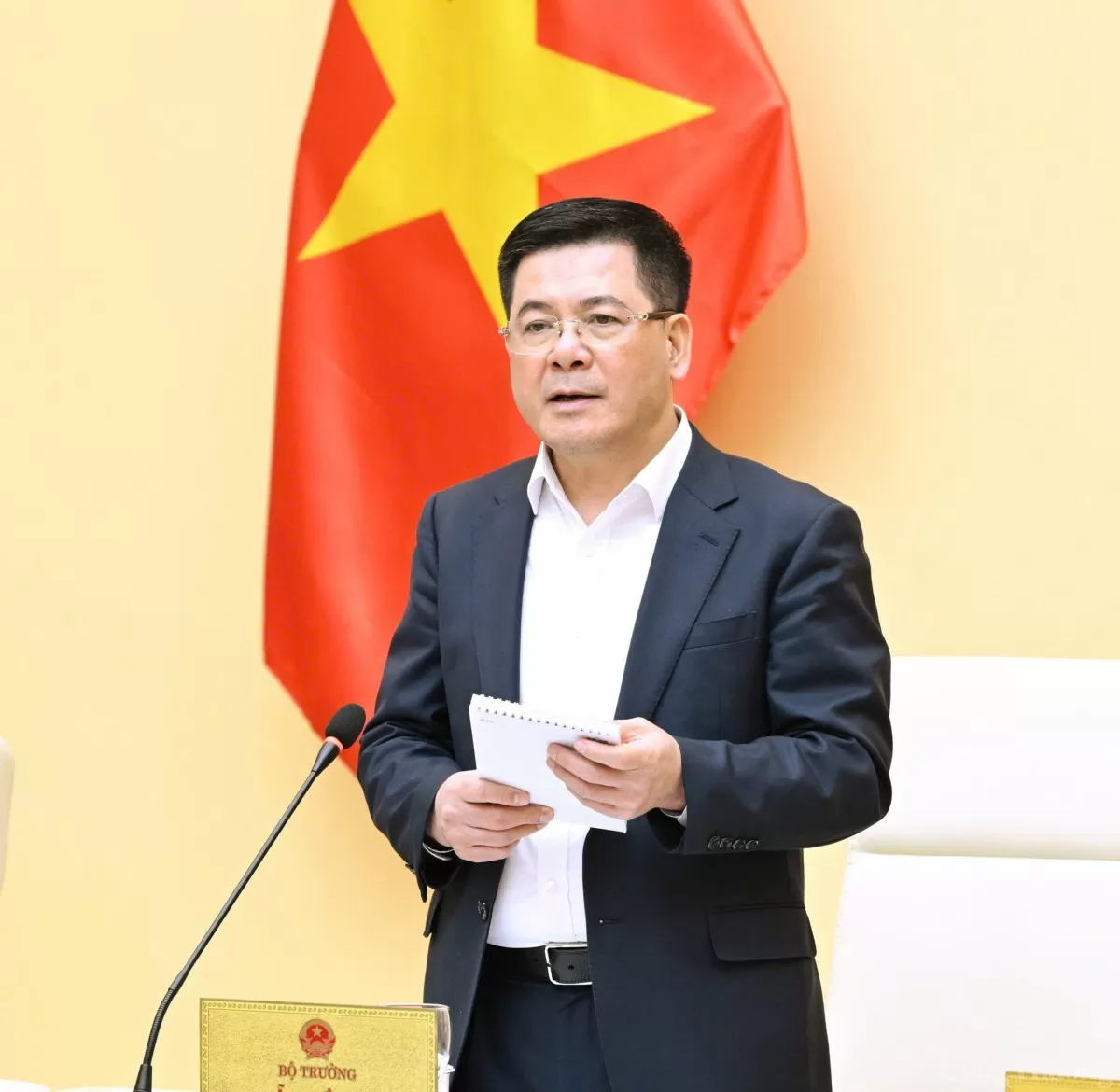 |
| Minister of Industry and Trade Nguyen Hong Dien chaired the meeting. - Photo: Can Dung |
The appraisal council includes representatives of ministries and branches such as: Ministry of Science and Technology, Ministry of National Defense, Ministry of Public Security, Ministry of Finance, Ministry of Planning and Investment and many large corporations in the energy sector such as EVN, PVN, TKV, National Power Transmission Corporation and regional power corporations along with review experts.
According to Mr. To Xuan Bao, consulting the members of the Appraisal Council, relevant ministries, branches and agencies is an important step to ensure the comprehensiveness and rigor of the project. In the spirit of both implementation and evaluation, the meeting took place under the chairmanship of the Council's Vice Chairman - Minister Nguyen Hong Dien under the authorization of the Council's Chairman.
Complete the assessment soon to submit to the Government
After listening to the report, Minister Nguyen Hong Dien emphasized the important goals of economic growth and sustainable energy transition in the coming period, especially the period 2025 - 2050. According to the Minister, the Central Government, the National Assembly and the Government have set the target of achieving economic growth of at least 8% by 2025, striving for double-digit growth in the following years. By 2030, Vietnam must complete the development target of 2.5 - 3 times the current electricity capacity, moving towards 5 - 7 times the scale by 2050.
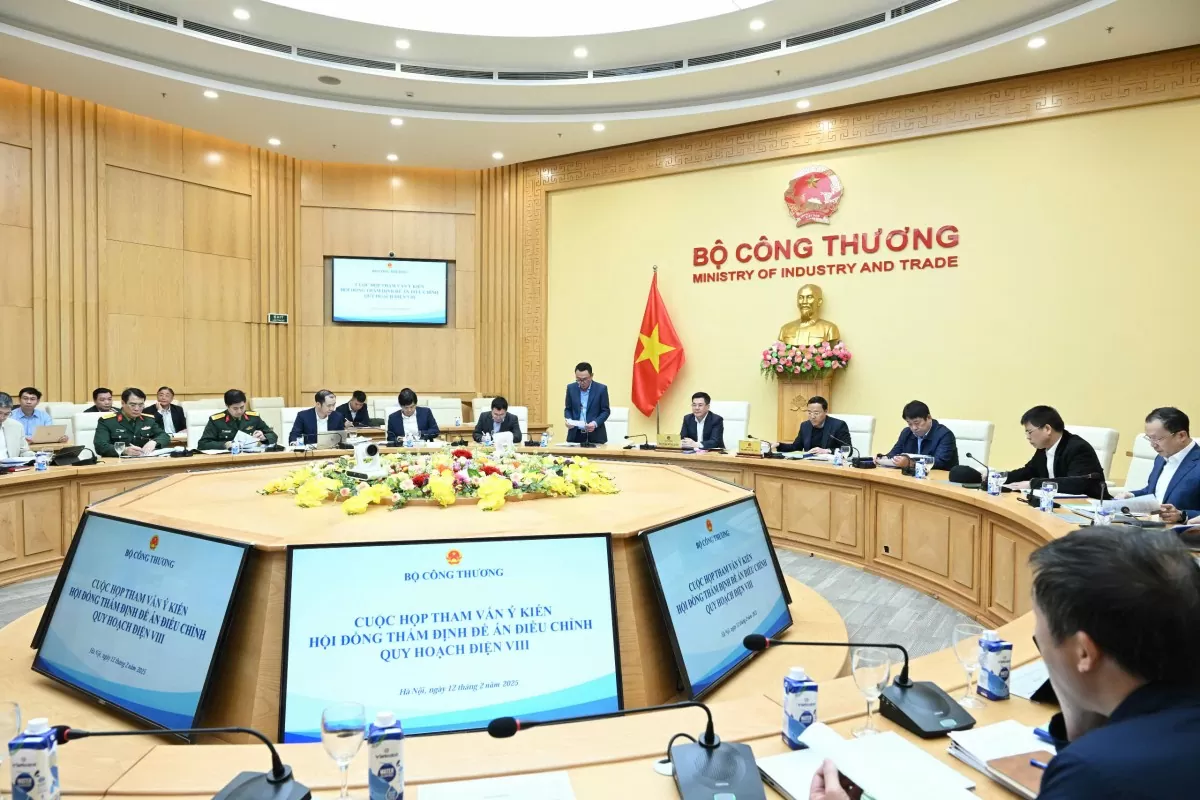 |
| Overview of the meeting. - Photo: Can Dung |
To achieve these goals, energy growth must be synchronized with economic scale, while meeting the international commitment to carbon neutrality by 2050. This requires a rapid adjustment of the Power Development Plan VIII, which was only approved in 2023, to accommodate strong growth demand and the clean energy transition trend.
Minister Nguyen Hong Dien said the Government has directed the maximization of renewable energy potential, including onshore wind power, offshore wind power, concentrated solar power and rooftop solar power. In addition, it is necessary to rationally develop basic energy sources such as liquefied natural gas and gradually restore and develop nuclear power to ensure a stable, clean and sustainable power supply.
The three main objectives of the Power Plan VIII are clearly defined: Meeting domestic load demand in each region, promoting direct electricity trading and exporting clean electricity to neighboring countries. Vietnam has signed a number of electricity export contracts with Singapore and Malaysia, creating the premise for expanding the clean energy market in the region.
In parallel with the adjustment of the Power Plan VIII, the Government has completed the revision of the Electricity Law - an important turning point after 20 years of implementation. This revision helps to remove many obstacles in the process of developing new energy sources. Minister Nguyen Hong Dien emphasized that the revised Electricity Law was discussed and approved in a National Assembly session, with a preparation time of only 8 - 9 months, instead of 22 months as in the usual process.
To implement the Electricity Law (amended), the Ministry of Industry and Trade is urgently completing decrees and circulars guiding its implementation, which are expected to be announced in the next few days. These documents will create a solid legal basis, helping to realize the goals of the 8th Electricity Master Plan and move towards carbon neutrality by 2050.
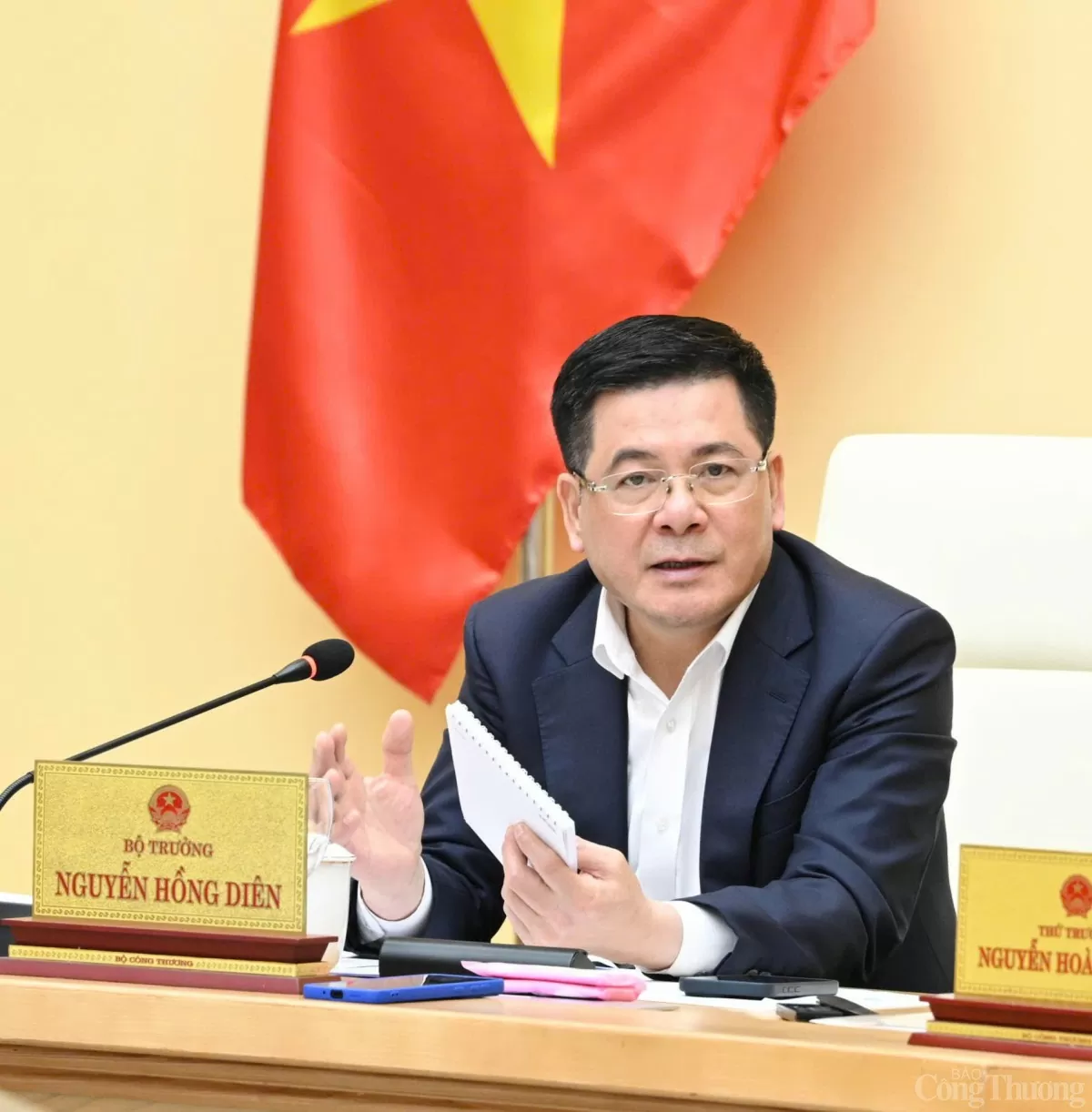 |
| Minister Nguyen Hong Dien said the Government has directed to maximize renewable energy potential. Photo: Can Dung |
Implementing the Government's direction, the Ministry of Industry and Trade has coordinated with ministries, branches and localities to vigorously implement the draft of the revised Power Plan VIII. To date, this draft has been basically completed and has been widely consulted with people from all walks of life, relevant ministries, branches and localities.
According to regulations, before being submitted to competent authorities for approval, the draft will be appraised by the national appraisal council. Minister Nguyen Hong Dien expects that the completion and implementation of the revised Power Plan VIII will be an important breakthrough, helping Vietnam achieve its sustainable development goals and effective energy transition, contributing to the goal of carbon neutrality by 2050.
Need a synchronous legal framework
Mr. Nguyen Anh Tuan, former Deputy Director of the Institute of Energy, Vice President and General Secretary of the Vietnam Energy Association, said that adjusting the electricity demand forecast is necessary, in line with the reality and development orientation of the Party and the State. According to Mr. Tuan, with an expected GDP growth rate of 8% in 2025 and 10% in the period of 2026 - 2030, electricity demand will increase. The Draft Power Plan VIII has proposed two scenarios: Electricity demand growth of 10.3% according to the basic plan and 12.5% according to the high plan, close to economic development scenarios.
Mr. Nguyen Anh Tuan emphasized that it is necessary to calculate regional backup plans to avoid local power shortages, instead of nationwide backup. For the period 2031 - 2035, reducing the growth rate of electricity demand is reasonable, in line with the trend of shifting to a service economy and reducing energy-consuming industries. In addition, it is necessary to carefully assess the electricity demand for green transportation, especially the North-South high-speed railway and the Metro system.
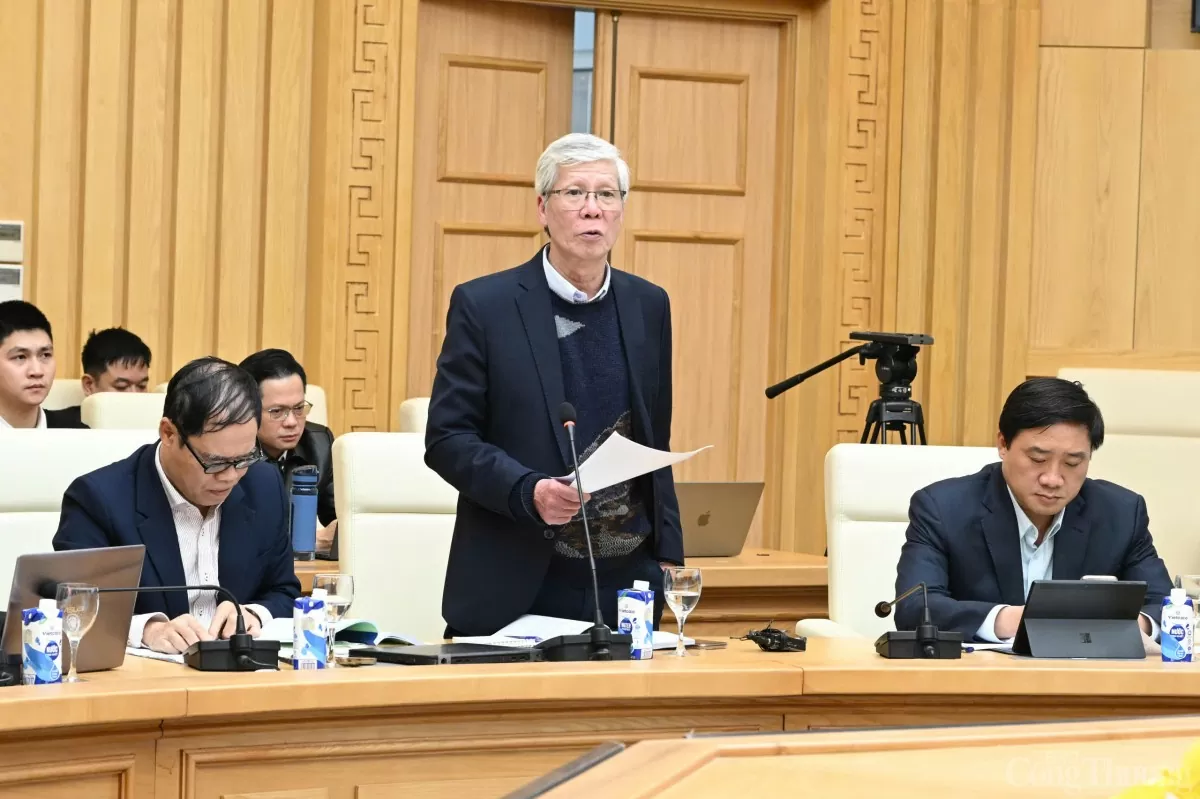 |
| Mr. Nguyen Anh Tuan, former Deputy Director of the Institute of Energy, Vice President and General Secretary of the Vietnam Energy Association. Photo: Can Dung |
Regarding renewable energy, the leader of the Vietnam Energy Association said that the strong growth in the 2018-2021 period has posed many challenges. Increasing solar power capacity from 18GW to 34GW and wind power from 19.5GW to 22GW is feasible, but requires better management and coordination in the face of an increase in small-scale projects. According to him, the biggest challenge is managing hundreds of small, scattered power sources, related to legal, technical and land issues. To meet demand, Vietnam needs to mobilize from 30.7 to 40 billion USD in investment capital by 2030, mainly from the private sector and non-state enterprises.
Regarding LNG power, Mr. Nguyen Anh Tuan recommended the early issuance of regulations on gas price transfer to launch important projects such as: Block B and Nhon Trach power. Although Decree 80/2024/ND-CP regulating the mechanism for direct electricity purchase and sale between renewable energy power generation units and large electricity users has been issued, many projects are still behind schedule due to the lack of complete power purchase and sale contracts.
Regarding pumped storage hydropower and electricity storage, the leader of the Vietnam Energy Association said that it is necessary to quickly build a clear pricing mechanism to attract investment. Regarding nuclear power, he agreed with the plan to restart the project, but noted that building the first plant in 2031 is a big challenge, requiring careful preparation in terms of technology and human resources.
Mr. Nguyen Anh Tuan emphasized that the energy development strategy needs to be balanced between regions. While the North lacks electricity, the Central region has a surplus. "We should take advantage of the solar power potential in the North. Germany has 96,000 MW of solar power with only 900 hours of sunshine per year, while the North of Vietnam has up to 1,200 hours of sunshine" - Mr. Tuan cited and recommended that there should be a reasonable development policy and equal investment allocation between regions to optimize resources and reduce capital pressure.
Expand the forecast further
Mr. Nguyen Thai Son, former Chief of Office of the National Steering Committee for Electricity Development, Chairman of the Scientific Council of Vietnam Energy Magazine, commented that the calculation and forecasting methods in the recently completed report were basically built tightly, suitable for the actual situation.
The former Chief of Office of the National Steering Committee for Power Development proposed that more emphasis should be placed on assessing the differences between regions in forecasting electricity demand. According to Nguyen Thai Son, while some regions reached 101% of the forecast, some regions only reached less than 80%, requiring careful analysis of the causes to find appropriate solutions in the upcoming planning adjustment.
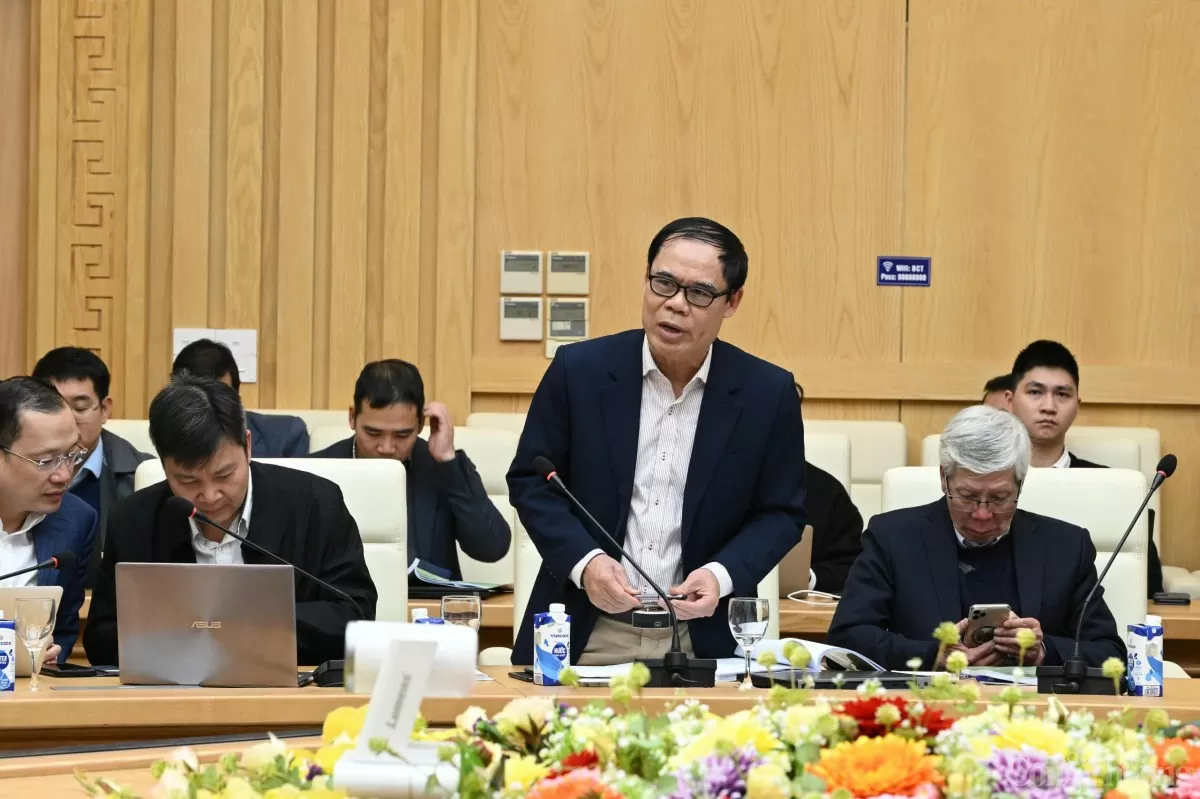 |
| Mr. Nguyen Thai Son, former Chief of Office of the National Steering Committee for Electricity Development, Chairman of the Scientific Council of Vietnam Energy Magazine. Photo: Can Dung |
Mr. Nguyen Thai Son also proposed to expand the forecast for the period 2031-2035 to clearly identify key investment portfolios, ensuring stability and continuity in the process of developing power sources. This will help authorities and businesses to be better prepared, especially in the important transition period of the energy industry.
In addition, Mr. Son emphasized the importance of reviewing mechanisms, policies and administrative procedures to eliminate inappropriate regulations and simplify processes to encourage businesses to invest in energy projects. At the same time, there must be close coordination between management and supervision agencies to ensure transparency in the implementation process.
Regarding operational solutions, Mr. Nguyen Thai Son recommended developing an operational scenario higher than the forecast level to respond to unexpected situations, ensuring stable electricity supply for the national economy. At the same time, promoting grid connectivity with regional countries such as Laos and China, as well as developing smart grid infrastructure to improve the efficiency of national power system operations.
Prize Sustainable solutions for Central Vietnam and nuclear power
Mr. Ngo Tuan Kiet, senior researcher and former Director of the Institute of Energy Science, emphasized that the economic and social situation is changing rapidly, requiring adjustments to the Power Plan VIII to meet stronger development needs. According to Mr. Kiet, the determination of the political system, the National Assembly and the Government in promoting economic growth at a higher rate than the Power Plan VIII is an important new point. In particular, the decision to restart two nuclear power projects is a strategic step.
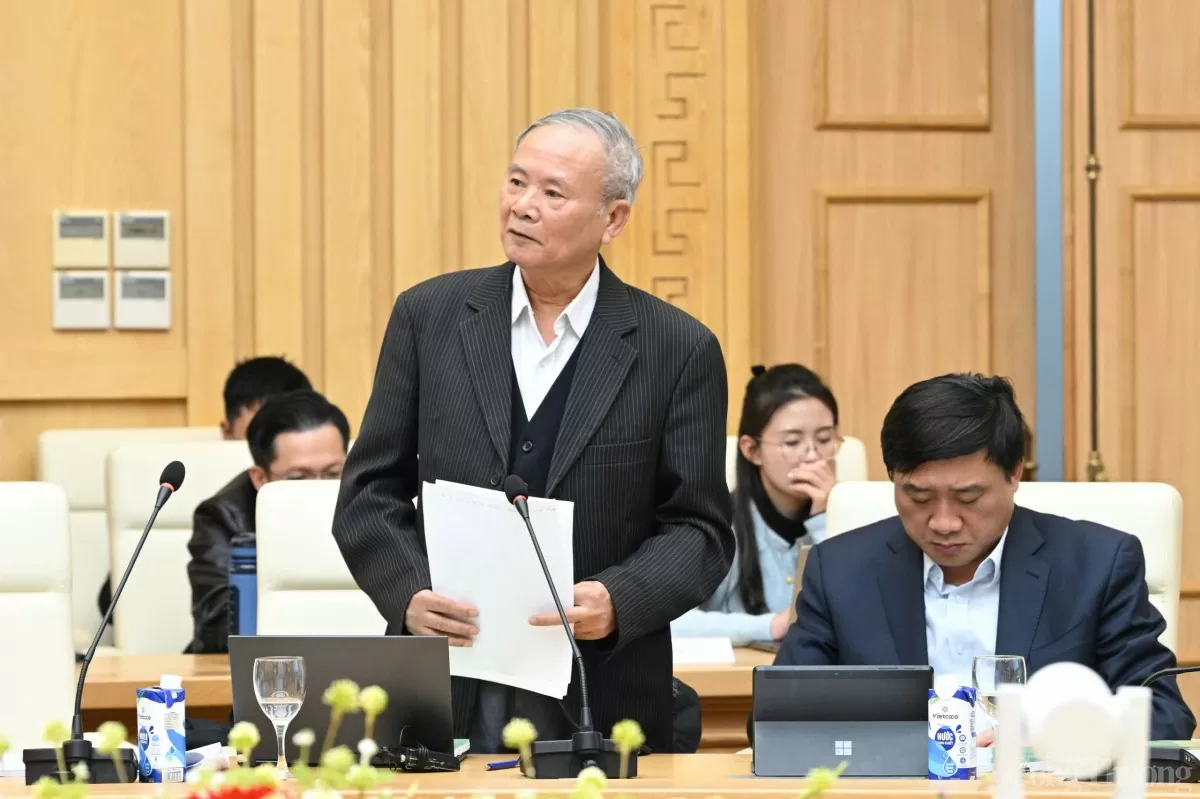 |
| Mr. Ngo Tuan Kiet, senior researcher, former Director of the Institute of Energy Science. Photo: Can Dung |
Mr. Kiet said that although the received revised draft was still abridged and lacked detailed calculations, the Drafting Committee had made efforts to carry out the task in a short time, basically meeting the requirements on development perspectives and goals.
One of the major issues mentioned by Mr. Ngo Tuan Kiet is the imbalance in regional economic development. Currently, the North and the South are still the two main economic centers, while the Central region – despite possessing a lot of renewable energy potential – has not been properly exploited. Mr. Ngo Tuan Kiet proposed studying a scenario for economic development in the Central region to reduce the pressure on power transmission to the North and the South. This not only helps to minimize the risk of natural disasters to the transmission system but also makes the most of available local energy sources.
In addition, Mr. Kiet emphasized the need to consider more carefully the development of solar energy on hydroelectric reservoirs to reduce transmission costs and land use area. This is an effective solution, both protecting the environment and improving the stability of the system.
Regarding coal resources, this expert noted that many large projects have not found investors and need to be temporarily suspended in accordance with the spirit of the Power Plan VIII. However, he said that Vietnam should consider promoting the role of domestic state-owned economic groups instead of relying too much on foreign capital. In particular, investing in key projects such as the power plant in Quang Trach is necessary to reduce capital pressure.
Regarding nuclear power, Mr. Kiet affirmed that this is an inevitable choice to ensure long-term energy supply. With experience from previous feasibility studies, Vietnam can shorten the implementation time, aiming to complete the first two nuclear power plants within 5-6 years if there is determination and appropriate mechanisms.
Mr. Ngo Tuan Kiet also emphasized the need to abandon the fixed power purchase contract model and switch to a more flexible market mechanism to suit the new situation. This is an important step to help Vietnam build a sustainable and modern energy system in the future.
Receive consultations to finalize the draft adjustment
Concluding the meeting, Minister Nguyen Hong Dien requested the consulting unit to accept the following opinions: Regarding growth forecast, in the basic scenario, it is recommended to adjust by 45-50% compared to Power Plan VIII.
“ Because we set a target of 8% GDP growth in 2025, and 10% growth each year from 2026 to 2030. So the base scenario must be 45-50%, the high scenario 60-65% compared to present, and the extreme scenario 70-75% ,” the Minister pointed out.
At the same time, the Minister also agreed with the opinions of the opponents from the development thinking about electricity as well as the economic development thinking. “ The less advantageous places are when applying technology, the more advantageous they are for development. For example, forming data centers in the Central region or forming industrial complexes using a lot of clean energy in the Central region, the Central region will naturally develop. When the Central region's economy develops, at the same time we will also exploit the potential and natural advantages of the Central region to develop renewable energy ,” said the Minister.
Regarding the source, the Minister said that it is agreed to develop the maximum potential of renewable energy, but it is also necessary to take into account the potential and advantages in which regions and areas are best for development.
Regarding hydropower and pumped storage hydropower, the Minister proposed to fully exploit this source because it is both clean energy and a source of base electricity.
Regarding biomass electricity, the Minister noted that it is necessary to follow the criterion of 15 MW/million people. In addition, if using materials from planted forests or waste, industrial waste or household waste, it must be calculated according to the norm. Special attention should be paid to developing new energy. Electricity and gas include domestic natural gas and liquefied gas and nuclear power.
“We will develop centralized nuclear power and small-scale nuclear power nationwide. Therefore, in this plan, it is proposed that by 2030, it is not only Ninh Thuan but at least 3 out of 8 identified locations must be able to build nuclear power plants,” the Minister emphasized.
In addition, the Minister also agreed that some domestic natural gas mines that are behind schedule can still be invested normally according to plan and use liquefied gas in the first phase. This will ensure energy security and base power sources. At the same time, it is also necessary to focus on power sources through battery storage.
Regarding transmission, the Minister suggested that the adjusted Power Plan VIII should apply smart grids and deploy them widely. In addition, inter-regional transmission should consider underground cable options, including onshore and underwater, under the ocean floor.
Regarding the solution, the Minister agreed with the opinions of the opposing members. At the same time, he affirmed to move towards a competitive electricity market at all three levels: competitive electricity generation, competitive electricity wholesale and competitive electricity retail, with two-component electricity prices including both purchase and sale prices. As well as determining hourly price frames; clearly defining price frames for all types of electricity, including those that already exist and those that do not.
The Minister also requested that the General Director of Vietnam Electricity Group, Nguyen Anh Tuan, immediately propose the price of electricity and pumped storage hydropower. At the same time, the Minister requested to urgently separate the transmission price from the electricity cost in a market-oriented manner, calculating correctly, fully, and fully the cost of the transmission price.
“ Only then can we mobilize social resources in the transmission sector, including inter-regional and intra-regional transmission. In particular, there must be a specific mechanism for each type of electricity, especially baseload power and new energy sources ,” the Minister stated.
The Project to Adjust the VIII Power Plan consists of 12 Chapters. The VIII Power Plan has studied and calculated a number of different scenarios and options to ensure objectivity, scientificity, and strict compliance with the order and procedures in the planning, appraisal and approval. The Project has complied with the documents of the Party and the State on the strategic orientation of socio-economic development, energy development strategy, national master plan, closely following and fully absorbing the directions of the Government Standing Committee, Government leaders, comments and suggestions of ministries, branches, localities, organizations and associations at home and abroad. The adjusted Power Plan VIII after being adjusted and completed will meet the requirements set forth, including: (i) The scope and content of the planning comply with and fully address the tasks stated in Decision No. 1710/QD-TTg dated December 31, 2024 of the Prime Minister approving the Planning Task. (ii) The planning has closely followed and basically met the targets on electricity development until 2030 according to Resolution 55/NQ-TW, the economic development pace according to Resolution 81 on the National Master Plan, met international commitments on climate change response, and ensured the targets on land use area of power projects according to the National Land Use Plan. (iii) The planning has synchronously reviewed the factors, input data information, calculation constraints, considered the dynamic and open nature suitable to the new context and situation, inherited and developed comprehensively, optimized, synchronized, balanced between power sources, power loads and transmission grids, etc., thus ensuring the objectivity, accuracy, reliability and reasonableness of the output results of the calculation model, ensuring sufficient electricity supply for the economy at minimal cost, contributing to meeting Vietnam's commitment to net zero emissions by 2050. Specifically: + Commercial electricity: about 500-558 billion kWh in 2030; orientation for 2050 about 1238 - 1375 billion kWh. + Electricity production and import: in 2030 about 560-624 billion kWh; orientation in 2050 about 1,2360 - 1,511 billion kWh. + Maximum capacity: about 90-100 GW in 2030; and about 206 - 228 GW in 2050. + The elasticity coefficient of commercial electricity/GDP decreases sharply from about 1.25 times in the period 2026 - 2030 to 0.33 times in the period 2046 - 2050. + Total system power loss in 2030 is about 6%, in 2050 is about 5%. + Greenhouse gas emissions from electricity production are about 204 - 254 million tons in 2030 and about 27 - 31 million tons in 2050; aiming to reach a peak emission level of 170 million tons in 2030 on the condition of receiving strong financial, technological and governance support from international partners under JETP. |
Source: https://congthuong.vn/bo-truong-nguyen-hong-dien-tiep-thu-tham-van-hoan-thien-dieu-chinh-quy-hoach-dien-viii-373517.html
































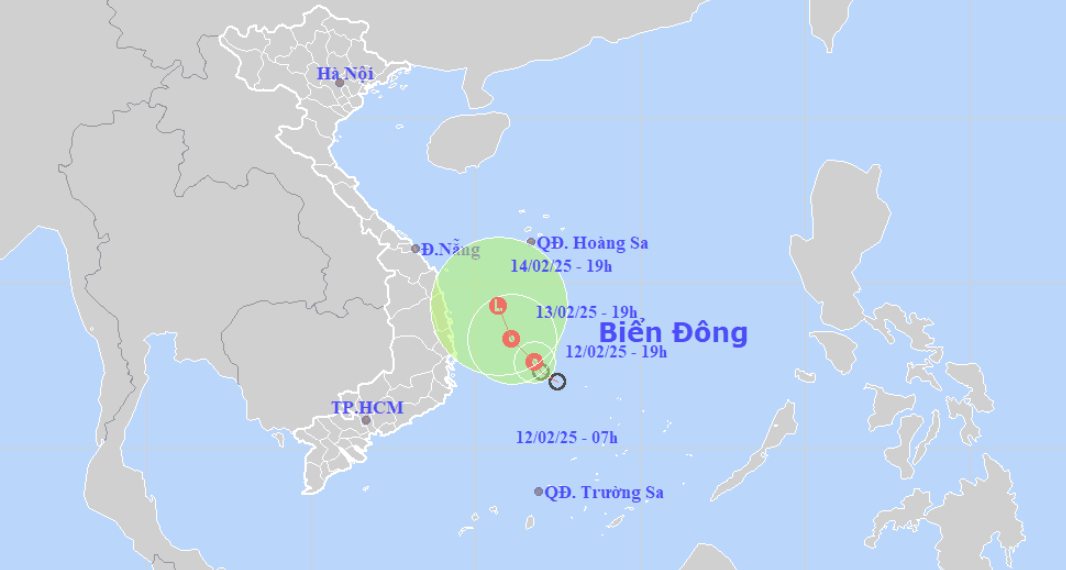



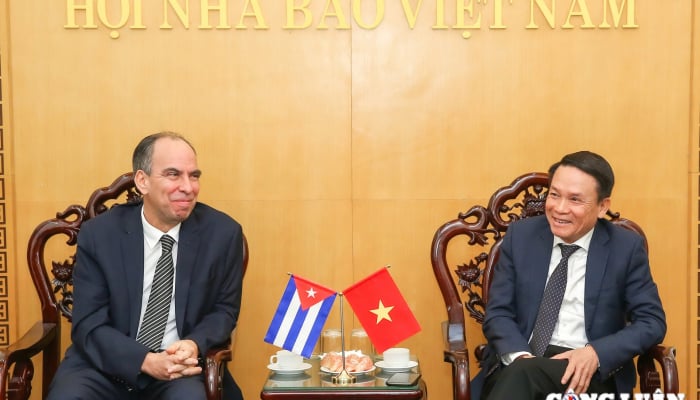

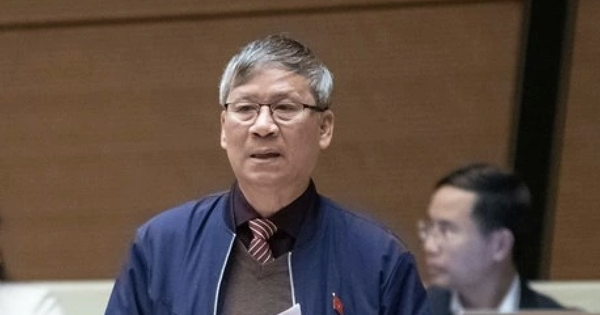


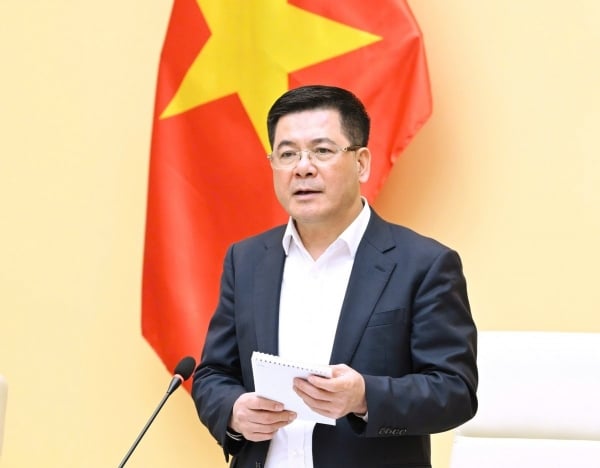



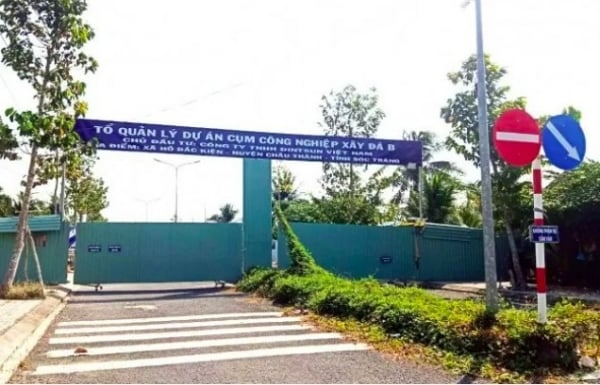













Comment (0)